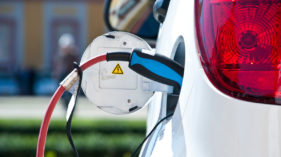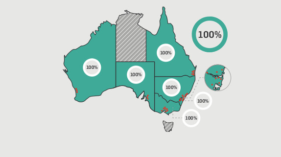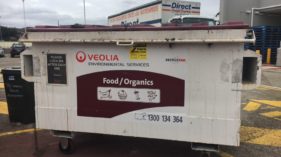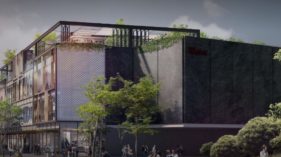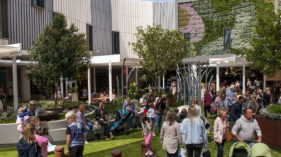Energy and Emissions
During the year we continued to make progress in minimising our environmental impact by implementing a range of strategic initiatives and innovative technologies, which helped us to maintain our energy intensity at 0.38 (0.38 in 2016) GJ/sqm while completing a number of centre redevelopments including Westfield Chermside and Whitford City.
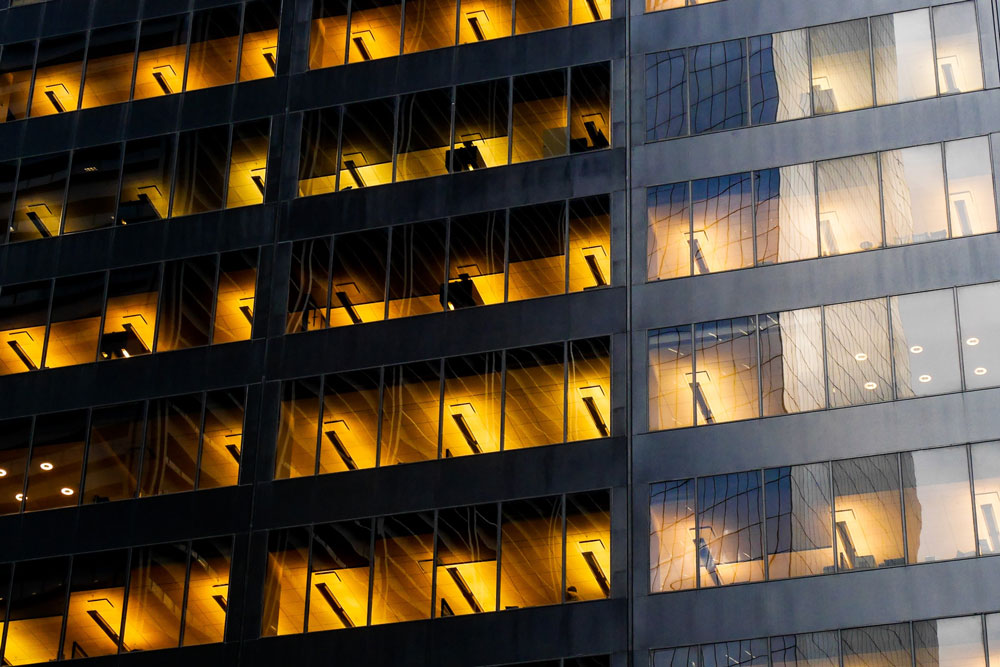
In 2017 we continued our efforts to improve energy efficiency. The Group’s operations reflected a year-on-year reduction in electricity consumption by 3% and a decrease in scope 1 & 2 greenhouse gas emissions by 2%. This continues the downward trend in reduction of both energy consumption and emissions generation that has been in place since 2014.
The completion of two redevelopment projects led to a significant increased consumption of fuels for transport and stationary purposes as well as electricity. Although redevelopments increase the area of our properties, we have achieved a marginal reduction of electricity usage resulting in our total energy intensity remaining the same as the previous year at 0.38 GJ/sqm .
An example of development-impacted energy usage was at the site of the Group’s first ‘greenfield’ development in 12 years, at Westfield Coomera in Queensland. This was largely responsible for the 13% year-on-year increase in direct energy consumption (primarily driven by the increase in on site usage of non-transport diesel fuels). Excluding the impact of this project, the overall direct energy usage across the portfolio had decreased by 4%.
*The natural gas usage has been revised during the 2017 reporting period due to a legacy error in one of our centre’s data reporting. As a result, the natural gas energy usage and emissions for this centre have been recalculated and adjusted accordingly. The 2015, 2016 and 2017 trend reflects these adjustments.
Energy and emissions are material aspects of Scentre Group’s environmental performance and as such, energy usage represents a significant portion of controllable operating expenses for our assets. The procurement of energy is ruled by regulatory requirements and its reporting is associated with stringent energy and emissions reporting obligations.
"Our electricity usage is the most important contributor to total greenhouse gas emissions, therefore our efforts are focussing on improving energy efficiency."
Purchased energy remains the single largest source of emissions for Scentre Group, representing nearly 95% of our Scope 1 and 2 emissions. Stakeholders – including our retail partners, co-owners and, increasingly, customers – expect us to operate our assets efficiently, saving energy wherever possible. We continue to pursue opportunities to reduce energy usage, such as investing in energy efficiency, managing energy demand and investing in renewable
energy generation.
In 2017 we finalised the construction of the Westfield Marion (SA) solar car park canopy, partnering with Origin Energy. The installation size is 647 kilowatts covering over 200 car bays and with an annual generation capacity of 950 megawatt hours. This equates to a CO2 offset of over 500 tonnes representing the emissions from 107 cars annually or 27 households.

Westfield Marion solar car park canopy
Our future solar plans include Westfield Plenty Valley, Carousel, Kotara and Coomera totalling over 5 Megawatts of solar generation capacity by 2020.
Programs and initiatives to reduce energy and emissions
Nearly 65% of all energy used in our centres is used for heating, cooling and ventilation (HVAC).
While each of our 39 assets are unique in their infrastructure, there are common initiatives that can be implemented across the portfolio to reduce energy usage and optimise operations, so each centre is operating as efficiently
as possible.
During 2017 Scentre Group has mandated the National Energy Efficiency Initiative sponsored by the executive, a strategy to increase energy efficiency in our operating assets across Australia, by reviewing and fine-tuning existing plant and equipment.
Our in-house engineering and centre infrastructure teams worked closely together to implement, among others, the below initiatives:
- Review of plant operating hours and adjustment of plant start and stop times in alignment with trading hours
- Review of temperature set points while maintaining occupant comfort levels and in alignment with environmental conditions
- Review of air filtration condition, efficiency and feedback to Building Management System (BMS)
- Night audits to determine if lighting in unused areas can be dimmed off to a lower lighting level
As part of our approach to energy management we have implemented new operating procedures in regards to energy management. We continued to consider where economically viable, the installation of building management systems with adequate control strategies combined with plant optimisation, the retrofit or upgrade of plants and equipment, such as cooling and ventilation systems, the development of demand management strategies and peak/off-peak energy usage strategies, and the installation of variable speed drives and power factor correction units for optimum plant operations.
Across the portfolio we achieved more than 3% electricity savings in 2017 through energy saving initiatives, saving approximately 10,000 tonnes of CO2 between 2016 and 2017.
During 2017 we invested in LED lighting upgrades in Westfield Chatswood (NSW) and Helensvale (QLD) centres and all redevelopments now feature LED lighting as part of design concepts.
We monitor and report electricity performance monthly and provide regular reports to senior management on electricity usage. Our facilities managers engage with HVAC and BMS contractors to ensure the assets meet annual electricity targets. The Group once again worked closely with the NSW Office of Environment and Heritage to deliver voluntary energy and water efficiency NABERS ratings across the majority of our Australian portfolio of
shopping centres.
In 2017 our portfolio achieved an average of 3.7 stars NABERS Energy ratings.
(*NABERS 2016/2017 Annual Report, shopping centre industry average is 3.6.)
Regulatory reporting for energy and emissions
The energy and climate legislative framework is still evolving in Australia. It will guide the economy towards the achievement of the National Energy Productivity Targets and the 2030 emissions reduction goals outlined in the international Paris Agreement. Risks of additional financial, legal or reputational constraints exist and need to be proactively managed.
Scentre Group operates under the following energy and emission regulations in Australia and New Zealand:
- the Renewable Energy Target encourages additional generation of electricity from renewable sources and aims to reduce emissions in the electricity sector. Environmental charges are imposed on large users including Scentre Group to grow the share of renewable energy to around 23% of electricity supply by 2020
- the National Greenhouse and Energy Reporting Act 2007 requires Scentre Group to report annually to the Clean Energy Regulator on our greenhouse gas emissions for Scope 1 and 2, as well as on our energy consumption and production data
- the Commercial Building Disclosure Program requires most owners and tenants of office space of 1,000 square metres or more to have an up-to-date Building Energy Efficiency Certificate. Some of the Group’s commercial buildings are subject to this requirement.
Scentre Group benefits from carbon emission credits, resulting from energy efficiency activities under the NSW Energy Saving Scheme and, as such, is not eligible to participate in the Emissions Reduction Fund, which took effect in November 2014 following the repeal of the Carbon Price Mechanism.
Alongside our operational initiatives to minimise our environmental impacts from energy and emissions, we are focussed on improving our voluntary disclosure of material risks and opportunities, enabling our investors to make better informed investment decisions. Our ongoing participation in the Carbon Disclosure Project and the Global Real Estate Sustainability Benchmark is a demonstration of this commitment.
In 2018 we will review the recommendation of the Financial Taskforce on Climate related Financial Disclosures and evaluate the potential climate risks facing the business and the magnitude of the implications of these risks.

Waste
Since 2014 we have increased the share of operating waste diverted from landfill from 45% to 47%, as we continue to drive our asset teams to improve recycling practices.

Materials
As a procurer of large amounts of building products and materials, we have significant influence on the sustainability of our supply chain. This represents a major opportunity for the Group’s design and construction, and operations to continue reducing our impact on the environment.
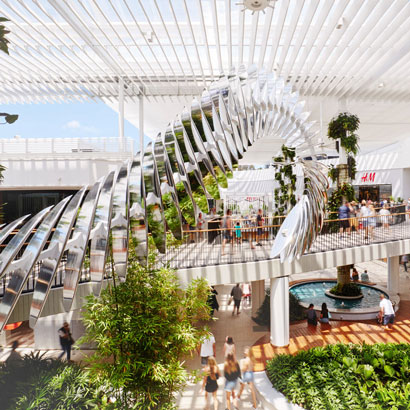
Designing for a Resilient Future
We are actively designing our new and redeveloped assets to be resilient against the impacts of climate change. It is our vision to find the harmonious balance between functionality, commerciality and sustainability.




